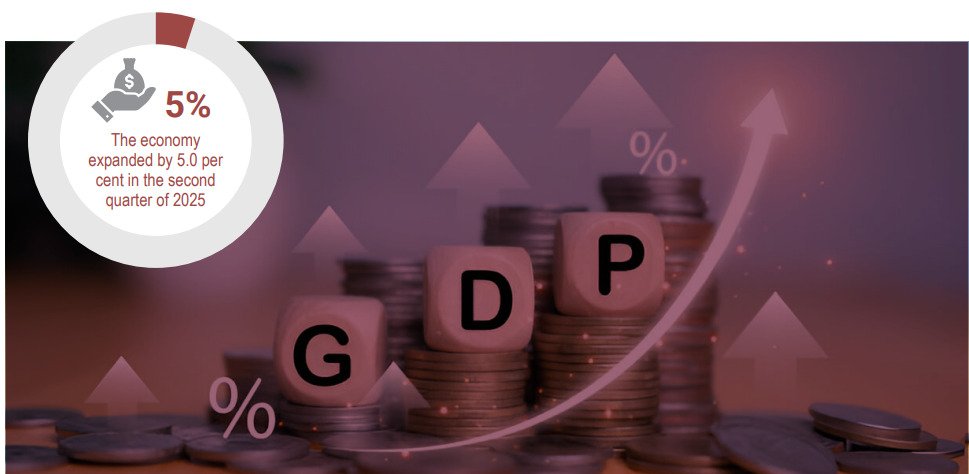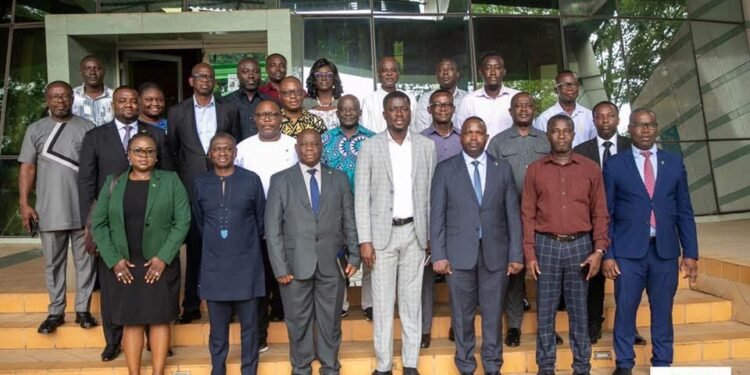Kenya’s economy grew by 5.0 percent year-on-year in the second quarter of 2025, a stronger performance compared to the 4.6 percent growth recorded during the same period last year, according to data released on Tuesday by the Kenya National Bureau of Statistics (KNBS).
The statistics office attributed this growth largely to the resilience of key sectors, including agriculture, transportation, and financial services, while other industries such as construction, mining, and electricity supply showed notable recovery.
Agriculture, forestry, and fishing activities expanded by 4.4 percent, supported by favorable weather conditions that boosted both crop and livestock production. Transportation and storage activities rose by 5.4 percent, while the financial and insurance sector registered robust growth of 6.6 percent. Construction also showed a turnaround, expanding by 5.7 percent after contracting in the second quarter of 2024. Mining and quarrying surged by 15.3 percent during the review period, further strengthening the country’s growth profile.
Electricity and water supply recorded improved performance, posting 5.7 percent growth compared to 1.2 percent in the same quarter last year. The KNBS report noted that while gross value added for agriculture slightly slowed relative to 2024, overall favorable conditions kept the sector on an upward trajectory.

Inflation Eases As Currency Shows Mixed Trends
Kenya’s inflation eased significantly during the second quarter, averaging 3.89 percent compared to 4.87 percent in the same quarter of 2024. The decline was largely attributed to lower food and non-alcoholic beverage prices.
The Kenyan shilling strengthened by 1.2 percent against the U.S. dollar during the review period. However, it weakened against several major currencies, including the Japanese yen (6.5 percent), the British pound (4.5 percent), and the euro (4.0 percent). Regionally, the shilling also fell against the Ugandan shilling and South African rand but appreciated against the Tanzanian shilling.
The Central Bank of Kenya responded by easing monetary policy, lowering the Central Bank Rate (CBR) from 13.00 percent in June 2024 to 9.75 percent by June 2025. The broad money supply (M3) rose by 8.1 percent, standing at KSh 6,450.1 billion at the end of June.
The Nairobi Securities Exchange (NSE) also recorded a strong performance, with the NSE 20 Share Index jumping 47 percent from 1656.5 points in June 2024 to 2440.3 points in June 2025.
Despite these gains, the current account deficit widened sharply, rising from KSh 47.4 billion in the second quarter of 2024 to KSh 83.7 billion in the second quarter of 2025.
Government Forecasts Remain Upbeat Despite Challenges
In August, President William Ruto projected that East Africa’s largest economy would expand by 5.6 percent in 2025, up from 4.7 percent in 2024. The Ministry of Finance, however, warned that risks remain, including global trade tensions, market volatility, and extreme weather conditions that could undermine growth momentum.
Annual consumer price inflation as measured by the Consumer Price Index (CPI) stood at 4.6 percent in September 2025, underscoring ongoing pressure on household budgets. The increase in consumer prices was mainly driven by a rise in food and non-alcoholic beverages (8.4 percent), transport costs (4.0 percent), and housing, water, electricity, gas, and other fuels (1.4 percent). Collectively, these three categories make up over 57 percent of total household expenditure, underscoring their central role in shaping inflationary pressures.
The data reflects both Kenya’s resilience and its vulnerability: while agriculture, transport, finance, and industry continue to push the economy forward, external shocks and domestic structural weaknesses remain significant threats. As the government doubles down on reforms and investment, all eyes will be on whether growth targets are met in the face of mounting global and regional challenges.
READ ALSO: Education Minister Pledges Action on 13-Month Teacher Salary Arrears























